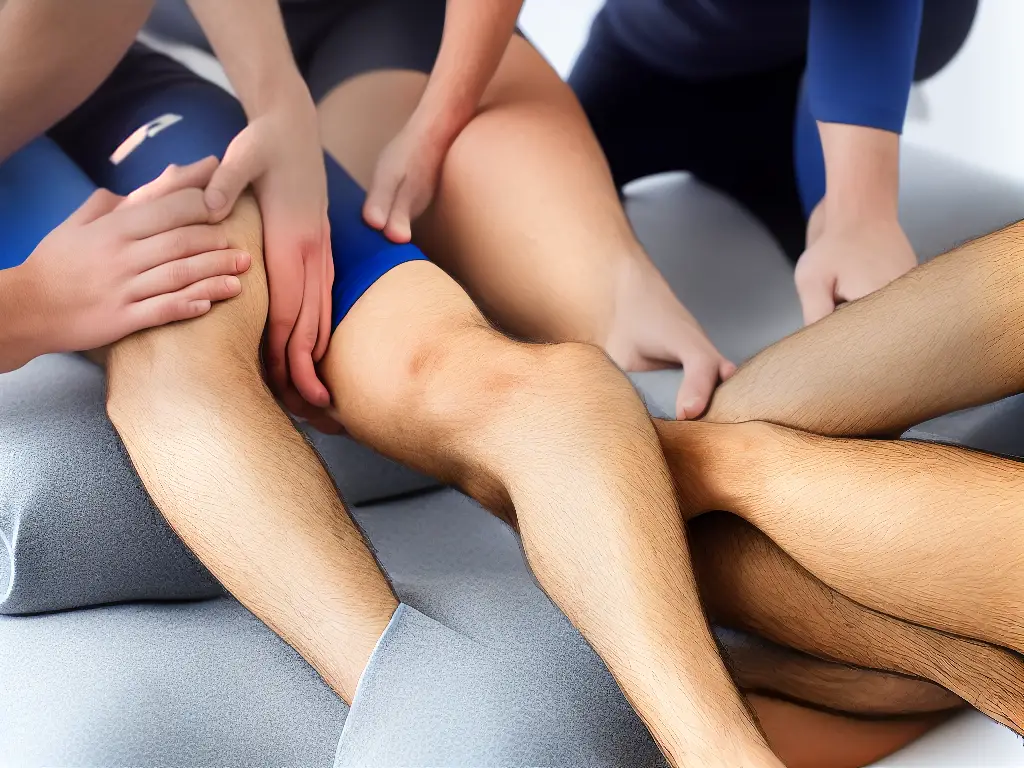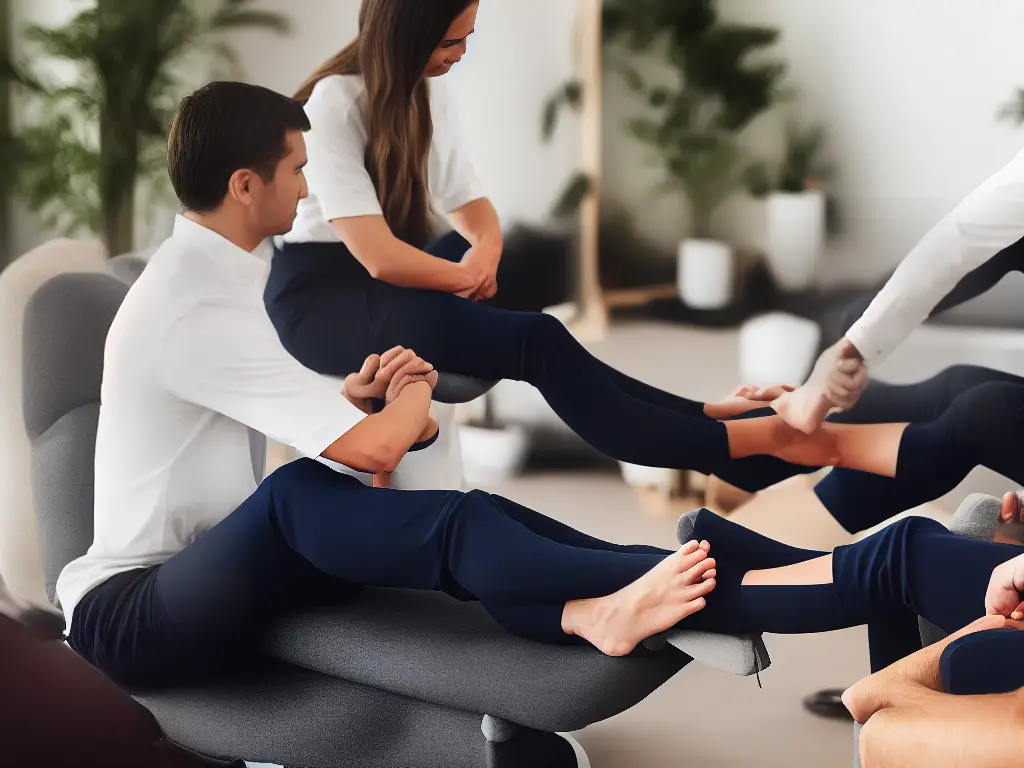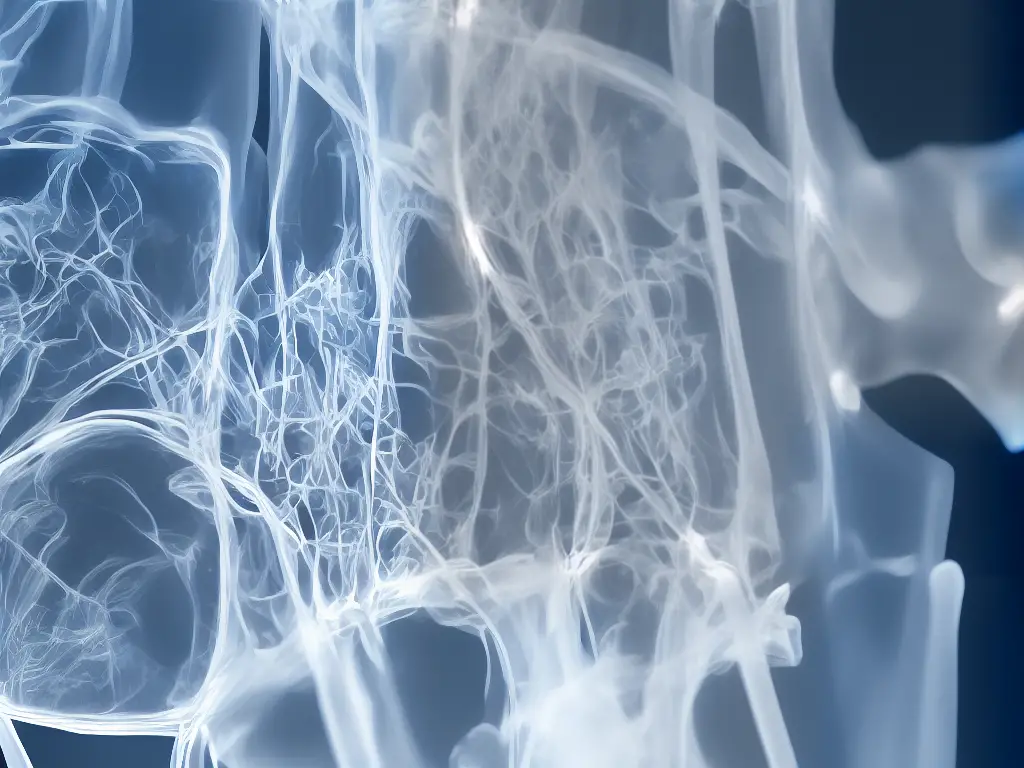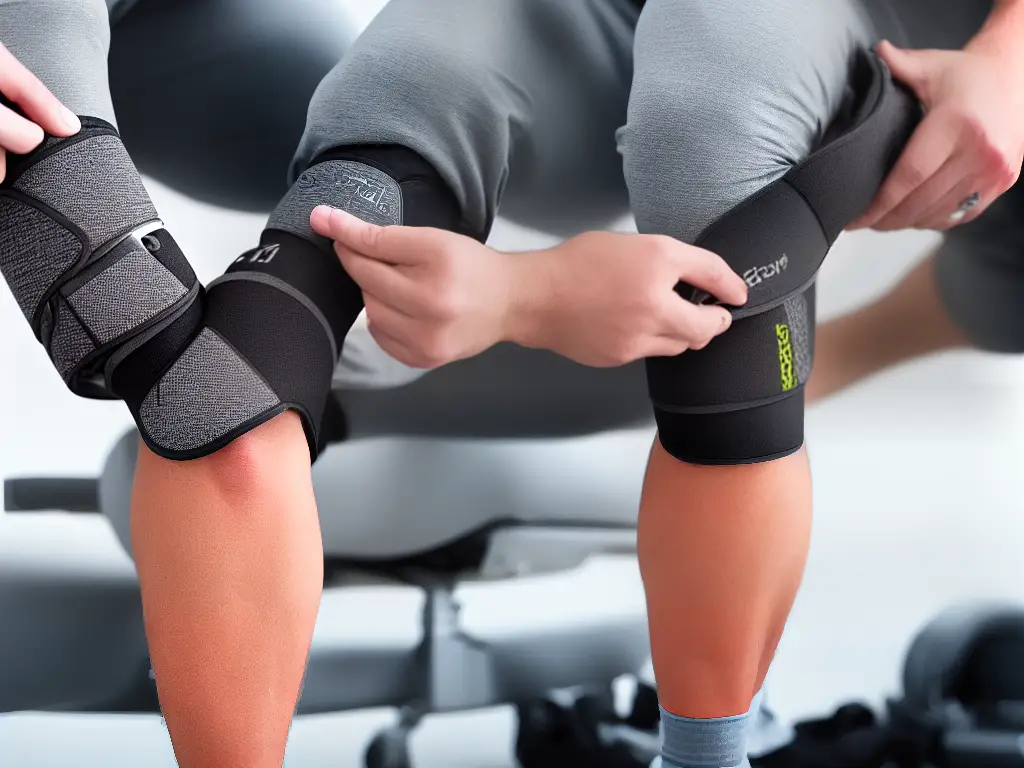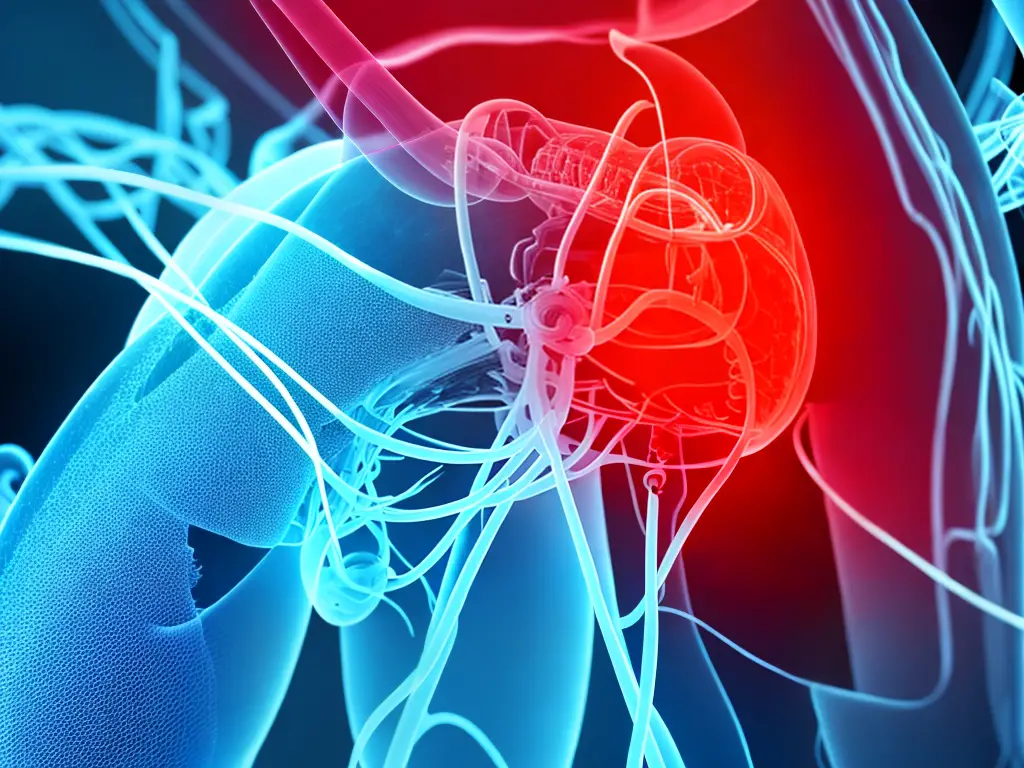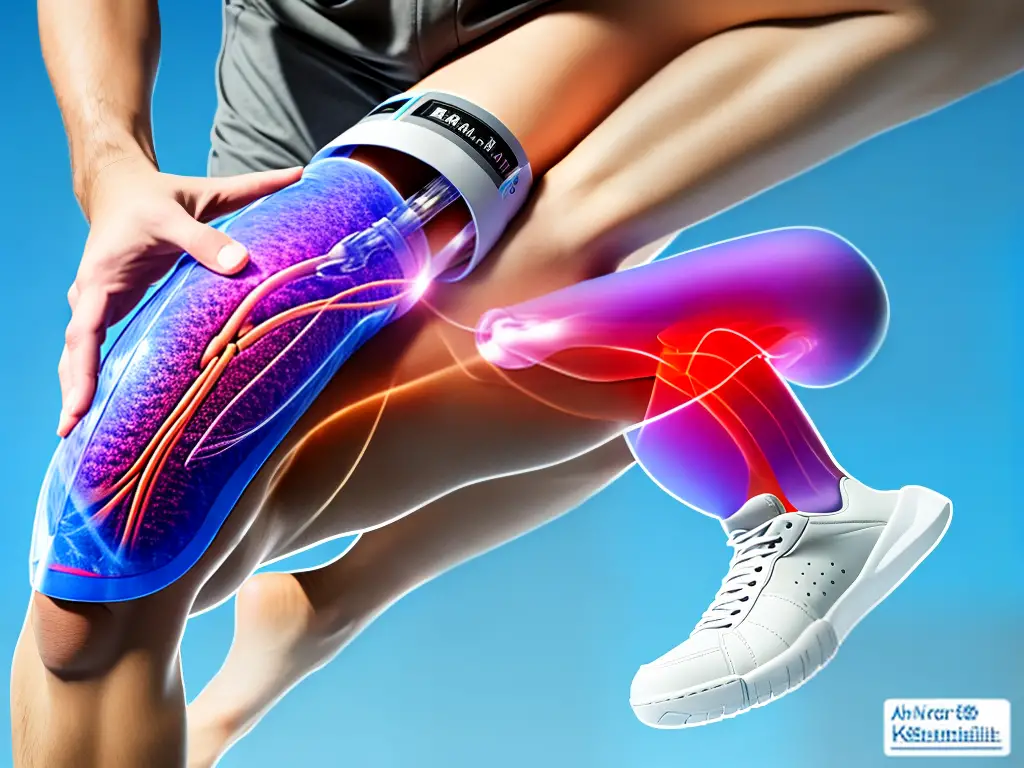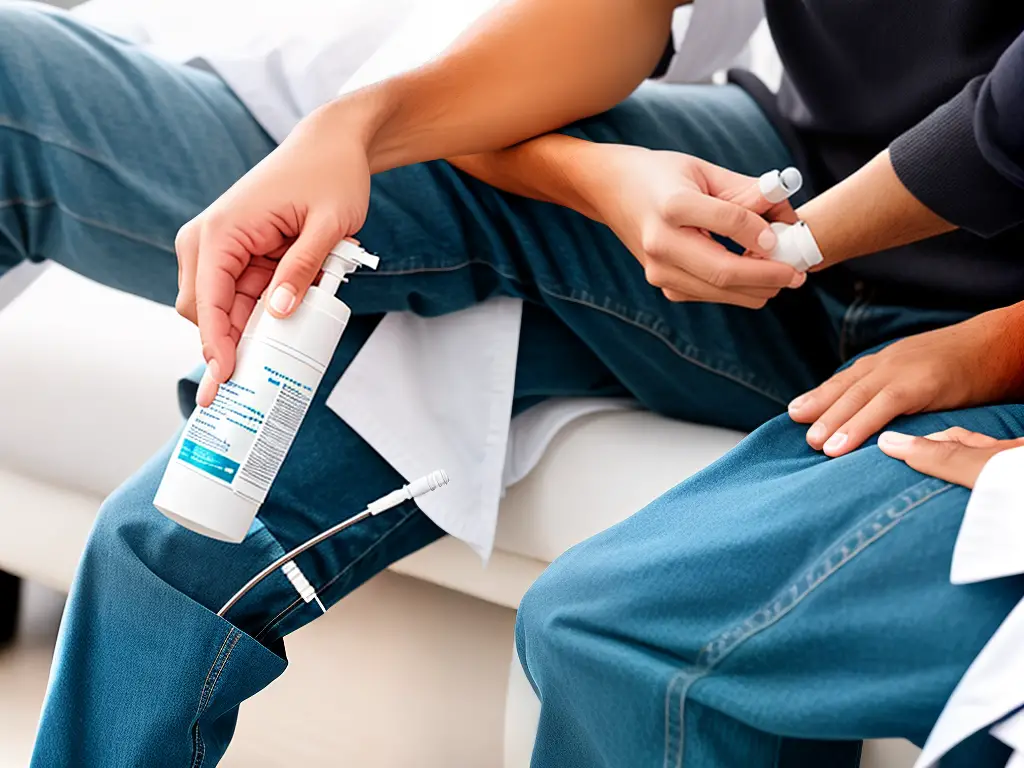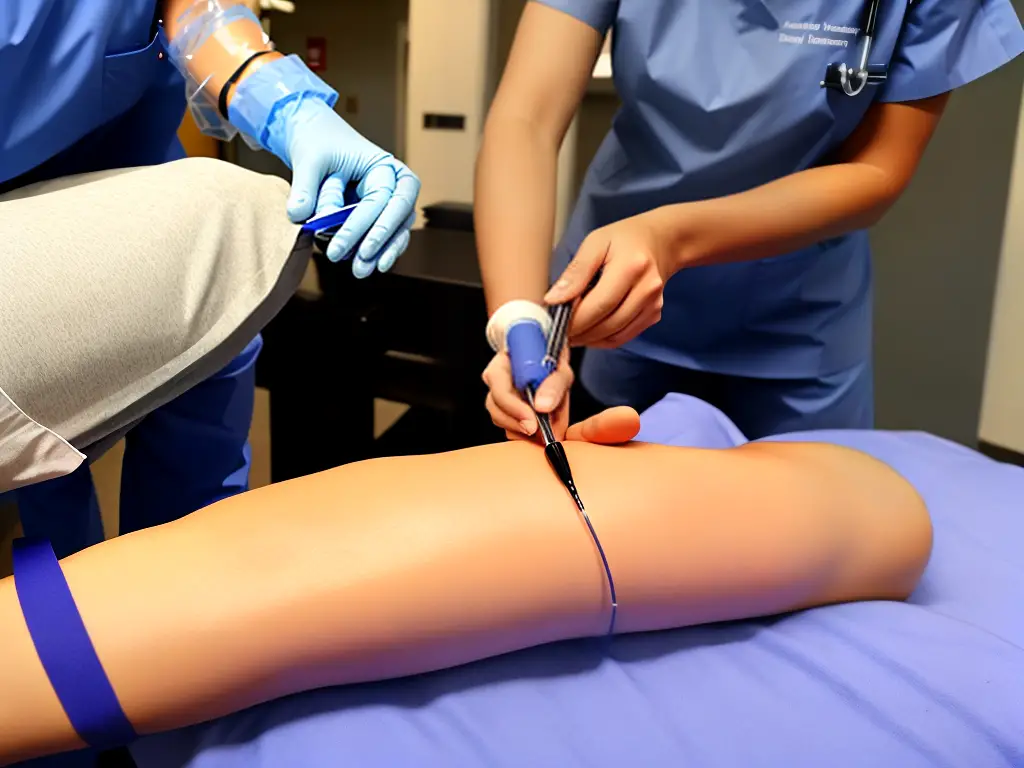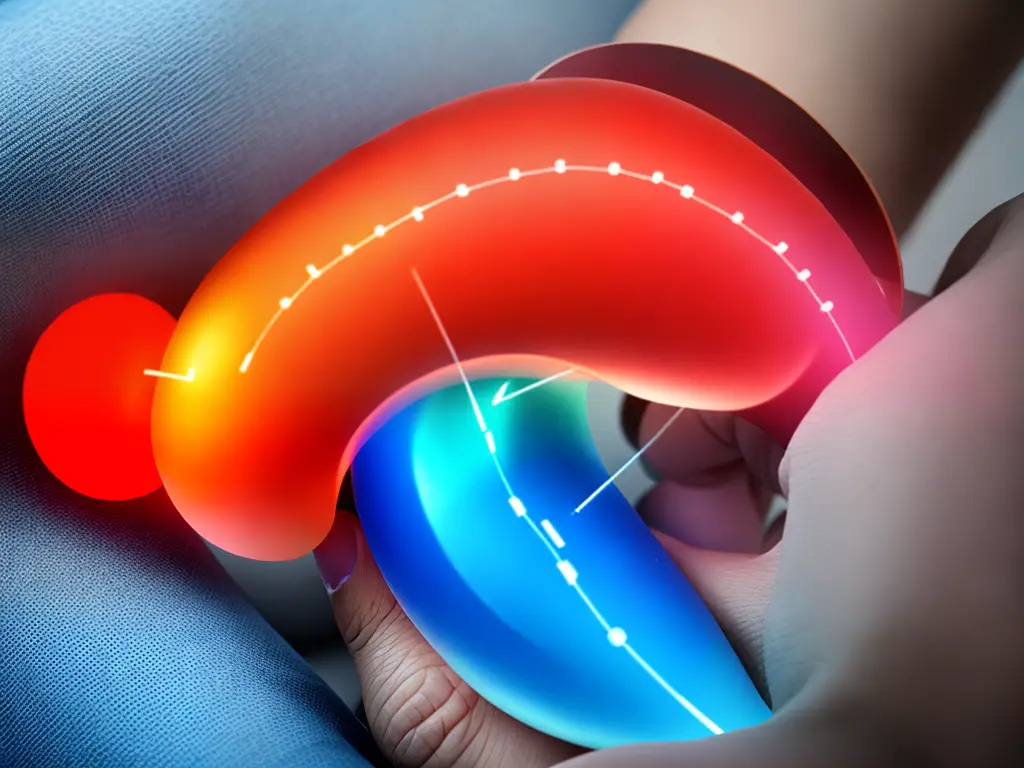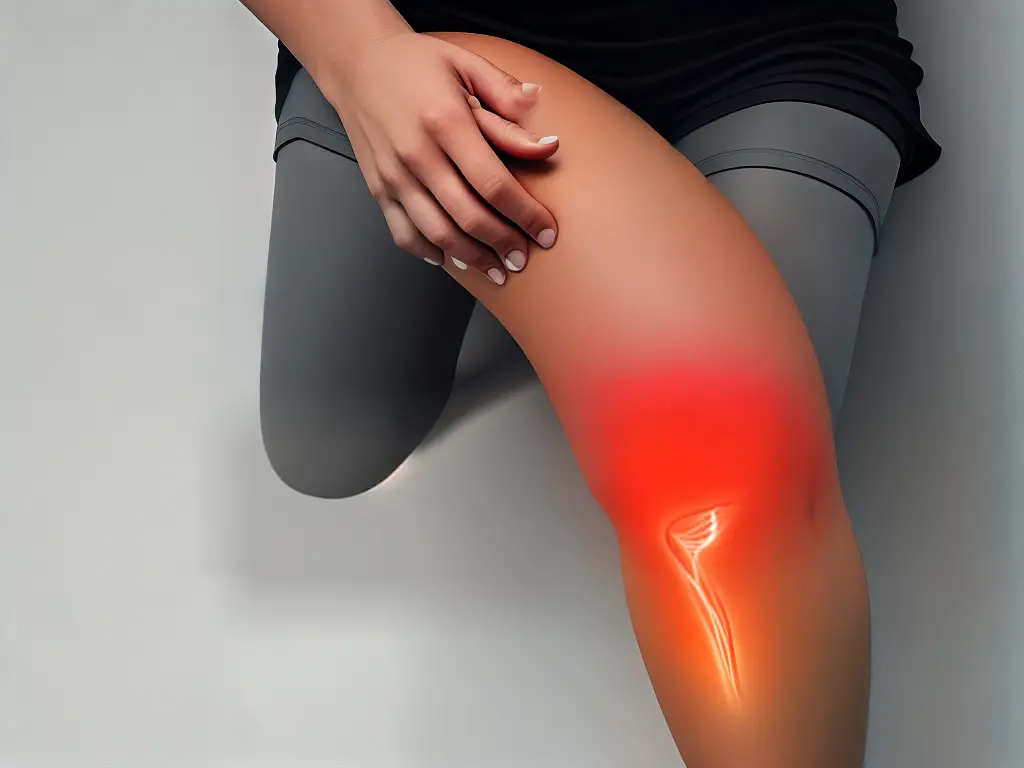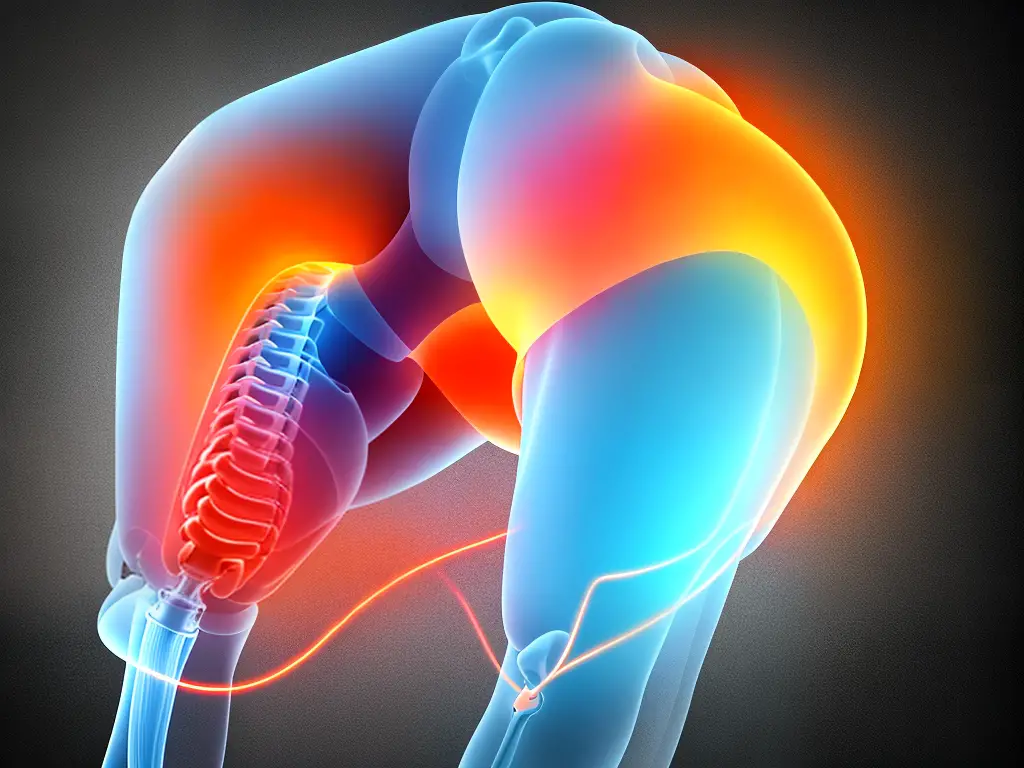Knee pain is a common problem that can affect people of all ages and fitness levels. As it can significantly impact daily activities and general well-being, finding an effective solution is crucial. Swimming is an excellent low-impact exercise that can help manage and prevent knee pain. In this article, we will explore how understanding knee pain, learning swimming basics, practice water safety, and incorporating specific exercises for knee pain relief can help you get back on track and beat knee pain.
Understanding Knee Pain
Knee pain is a common issue faced by adults, often impacting daily activities and overall health. It’s crucial to understand the causes and types of knee pain and learn how exercises like swimming can help manage and prevent it. In this guide, we’ll discuss the basics of knee pain and explore the benefits of swimming for alleviating discomfort and promoting overall health.
Understanding Knee Pain:
1. Causes of Knee Pain
Knee pain can result from various causes, including:
- Injuries: Ligament sprains or tears, meniscus tears, or tendon injuries can all create knee pain.
- Osteoarthritis: This degenerative condition results from wear-and-tear on the joint’s cartilage, causing pain and stiffness.
- Rheumatoid arthritis: An autoimmune disease that causes inflammation in the joints, leading to pain and swelling.
- Bursitis: Inflammation of the bursa, a fluid-filled sac that cushions the knee joint, can cause pain around the kneecap.
2. Types of Knee Pain
There are several types of knee pain, such as:
- Sharp or stabbing pain: Usually caused by an injury or acute inflammation.
- Dull, achy pain: Often a symptom of arthritis, bursitis or other chronic conditions.
- Intermittent pain: Can be due to activity-related strain or injury, often worsening with activity and improving with rest.
- Constant pain: May indicate a more serious underlying condition, such as severe arthritis or infection.
3. Impact on Daily Activities
Knee pain can significantly impact everyday life, limiting the ability to walk, climb stairs, sit, or stand comfortably. It may also hinder participation in sports and other recreational activities.
The Benefits of Exercise and Swimming for Knee Pain:
1. Exercise for Knee Pain Management
Regular exercise is essential for maintaining healthy joints and reducing knee pain. Exercise helps:
- Strengthen the muscles around the knee: Stronger muscles provide better support to the knee joint and absorb shock.
- Increase flexibility and range of motion: Improved flexibility helps prevent injuries and can reduce pain.
- Maintain a healthy weight: Excess weight puts additional strain on joints, exacerbating knee pain.
2. Swimming as an Ideal Low-Impact Exercise
Swimming is a low-impact, full-body workout that offers several benefits for people with knee pain:
- Buoyancy: Water supports body weight, reducing stress on the knees and other joints.
- Resistance: Moving through water provides gentle resistance, helping to strengthen muscles without causing strain on the knee.
- Flexibility: Swimming can help improve joint flexibility and range of motion, reducing the risk of injury.
- Cardiovascular fitness: Swimming increases heart rate and promotes cardiovascular health, essential for overall health and well-being.
3. Swimming Techniques for Knee Pain Relief
It is critical to choose swimming techniques that minimize stress on the knees. Some suitable styles include:
- Freestyle: Using a flutter kick while swimming freestyle can help reduce twisting and strain on the knees.
- Backstroke: This stroke allows for a gentle flutter kick and minimizes rotation of the knee joint.
- Kicking with a kickboard: Use a kickboard for support and practice flutter or dolphin kicks, which reduces stress on knees.
4. Precautions and Tips
Before starting any swimming program, consult a healthcare professional to ensure it is safe for your specific needs. Remember always to:
- Warm up and stretch before entering the water: Engage in gentle stretching exercises for your legs and knees to help prevent injuries.
- Begin slowly: Begin with short sessions of swimming and gradually increase duration and intensity as your strength and fitness improve.
- Listen to your body: Stop any activity that increases knee pain or discomfort, and consult a healthcare professional if necessary.
Conclusion:
Understanding the causes and types of knee pain is the first step in managing and preventing discomfort. Incorporating low-impact exercises like swimming into your routine can help alleviate knee pain, increase strength and flexibility, and promote overall health. Always consult a healthcare professional before starting any exercise program and listen to your body to ensure the best results.
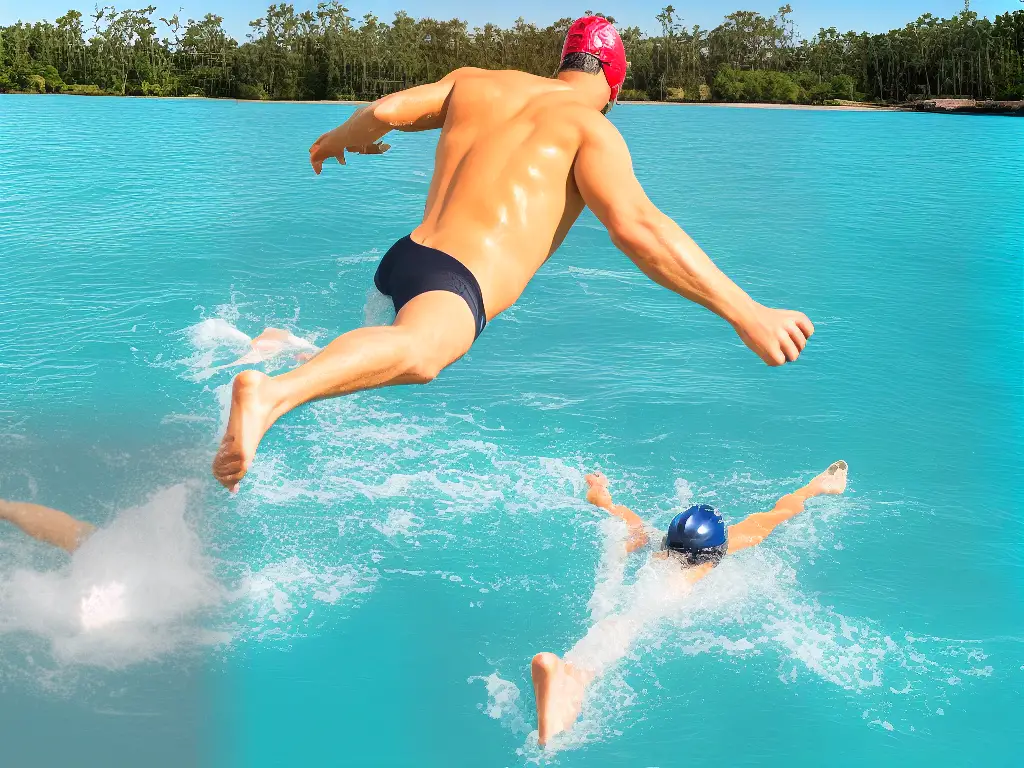
Swimming Basics
Swimming is an excellent low-impact activity for people with knee pain, as it allows you to exercise without putting additional pressure on your joints. Here are a few fundamental techniques for the freestyle, backstroke, breaststroke, and butterfly strokes, as well as breathing, body position, and overall support to help you feel more comfortable in the water.
1. Getting Comfortable in the Water:
- Slowly enter the pool and get used to the water temperature.
- Start by getting your face wet and blowing bubbles to get comfortable with breathing in and out while submerged.
- Practice floating on your back and front with the help of a floatation device like a kickboard or pool noodle.
2. Breathing Techniques:
- Inhale through your mouth before submerging your face in the water.
- Exhale slowly through your nose or mouth while your face is under the water.
- Only lift your head to inhale every few strokes or when you truly need a breath.
- Practice bilateral breathing (breathing on both sides) to maintain proper balance while swimming.
3. Body Position:
- Keep your body horizontal in the water with your head looking downwards.
- Engage your core muscles to maintain a streamlined position.
- Keep your legs close together and kick smoothly without bending your knees too much.
4. Freestyle (Front Crawl):
- Kick your legs in a flutter kick while maintaining a streamlined position.
- Use full arm strokes, reaching as far as you can in front of you and pulling the water back towards your hip.
- Turn your head to the side to breathe as your arm recovers to its forward position.
5. Backstroke:
- Float on your back with your arms resting at your sides, head looking upwards, and legs together.
- Perform a flutter kick by moving your legs up and down, keeping your knees mostly straight.
- Extend one arm straight back behind you, keeping your little finger entering the water first, then rotate your arm inward as you bring it back down towards your thigh.
- Alternate arms, keeping a fluid motion and using the opposite arm to the kicking leg.
6. Breaststroke:
- Keep your body horizontal with your arms and legs at your sides.
- Perform a frog kick by bending your knees and bringing your feet toward your buttocks, then kick out and around in a circular motion to propel you forward.
- Extend your arms forward, then pull your hands back towards your chest while keeping your head up to breathe.
- Use your kick to help lift your head above the waterline, and then bring your head back down as you glide forward.
7. Butterfly:
- Use a dolphin kick by moving your feet and legs together in an up-and-down undulating motion.
- Perform a wing-shaped arm sweep by extending your arms forward, then pulling them down and back simultaneously in a sweeping motion.
- As you pull your arms back, lift your head and torso above the waterline to take a breath, then return your face to the water as your arms extend forward.
- Keep your body undulating in a smooth rhythm as you perform the butterfly stroke.
Remember to always practice these techniques with patience and consistency, as it will take time to become proficient in each stroke. Consider taking swimming lessons or working with a coach if you want further guidance and support. Most importantly, listen to your body and take breaks when needed, especially if you are experiencing knee pain.

Water Safety and Etiquette
Swimming is an excellent low-impact exercise for individuals experiencing knee pain. Not only does it help in strengthening the muscles surrounding the knee joint, but it also provides a great cardiovascular workout. To ensure a safe and enjoyable experience when swimming for knee pain, it’s essential to practice water safety and etiquette. Here are some guidelines to follow:
- Choose the right swimming environment:
- Select a swimming pool with lanes designated for different swimming speeds, or a calm lake with a roped-off swimming area. This will allow you to swim at your own pace without interfering with other swimmers. Avoid overcrowded pools and beaches, which can make it difficult to maintain a safe swimming space.
- Observe pool rules and regulations:
- Familiarize yourself with the pool’s rules, which may include no diving, no running on the pool deck, and proper swimwear requirements. Rules are designed to keep everyone safe, so make sure to follow them.
- Learn basic swimming skills:
- Before starting a swimming routine for knee pain, ensure that you have fundamental swimming skills such as floating, treading water, and basic strokes like the freestyle (front crawl) or breaststroke. These skills will help you feel more confident in the water and allow you to maintain a safe swimming environment.
- Warm-up and stretch before swimming:
- Perform gentle stretching exercises and warm-up your muscles before getting into the water. This can help prevent injury and ensure that your body is prepared for swimming.
- Use appropriate swimming aids:
- If you’re not a strong swimmer or are new to swimming, consider using a kickboard, foam flotation belt, or a life jacket to help you stay afloat. This can help you focus on your technique and reduce the risk of injury.
- Swim with a buddy:
- Having a swim buddy or a lifeguard present is an essential safety measure. Not only will they keep an eye on you, but they can also provide assistance if needed. Inform your buddy of your knee pain, so they are aware of any limitations or potential complications.
- Respect other swimmers:
- Maintain awareness of your surroundings and give other swimmers ample space. Avoid making sudden movements or turns that may cause collisions. Follow the pool’s designated swim patterns, such as swimming in a counterclockwise direction in a lane.
- Practice good hygiene:
- Shower before and after swimming to help maintain proper water quality. Avoid swimming if you have any open wounds or if you’re experiencing any contagious illness.
- Listen to your body:
- Pay attention to any discomfort or pain you may feel while swimming. If you experience increased knee pain, cramping, or fatigue, stop swimming and consult your doctor or physical therapist for guidance.
- Cool down and stretch after swimming:
- Spend a few minutes cooling down and stretching your muscles after swimming. This can help prevent muscle soreness and improve flexibility.
By following these water safety and etiquette guidelines, you can create a safe and enjoyable swimming experience while effectively managing your knee pain. Remember to always consult with your doctor or physical therapist before beginning any new exercise program, especially if you have a preexisting condition or injury.

Swimming Exercises for Knee Pain
Swimming is a fantastic low-impact exercise that can help alleviate knee pain while also improving your overall fitness. Here are some swimming exercises specifically designed for people with knee pain. Remember to consult your doctor before starting any new exercise program, especially if you have a history of knee problems.
1. Warm-up Stretching
Before you begin any swimming exercises, it’s important to stretch and warm-up your muscles. Focus on stretching your calves, hamstrings, quadriceps, and hip flexors. Hold each stretch for around 20 seconds and repeat 2-3 times for each muscle group.
2. Water Walking
Water walking is an excellent exercise that uses the natural resistance of the water to strengthen and stretch your leg muscles without placing stress on your knees.
- Begin by walking in chest-deep water, with your shoulders relaxed and your arms floating at your sides.
- Start walking forward slowly, lifting each leg in a controlled manner and avoiding any jerky movements.
- Focus on walking with proper posture, keeping your back straight and your core engaged.
- Gradually increase your walking speed, eventually moving into a light jog if possible.
- Walk or jog for around 10-15 minutes to begin with, then increase the duration as you feel comfortable.
3. Leg Lifts
Leg lifts can help strengthen the muscles surrounding your knees while also helping to improve your flexibility.
- Stand in waist-deep water, with your back against the pool wall and holding onto the edge for support.
- Slowly lift one leg to the side, keeping it straight and your toes pointed forward.
- Hold the position for a few seconds before slowly lowering your leg back to its starting position.
- Repeat 10-15 times on each side, then switch to the other leg.
- To increase resistance, you can wear ankle weights or use a water noodle for added buoyancy.
4. Flutter Kicks
Flutter kicks are a great exercise to target your quadriceps, hamstrings, and hip flexors while also providing gentle resistance to your knee joints.
- Hold onto the side of the pool, with your arms extended and your body in a horizontal position.
- Keep your legs straight and begin kicking them up and down in a scissor-like motion, with one leg moving up as the other moves down.
- Aim for small, controlled movements, and don’t force your range of motion beyond what feels comfortable.
- Perform flutter kicks for around 1-2 minutes to begin with, then increase the duration as your knees become stronger.
5. Progressive Intensity
As you become more comfortable with these exercises and your knee pain begins to subside, you can gradually increase the intensity of your workouts. This may involve spending more time on each exercise, increasing the number of repetitions, or incorporating additional exercises, such as breaststroke or backstroke swimming.
Remember to listen to your body and back off if you experience any pain or discomfort. Consult a physiotherapist or swim instructor for more personalized advice on adapting your swimming workout to accommodate your knee pain.
Enjoy your time in the pool and keep working on these exercises consistently – before long, you may notice a significant decrease in your knee pain and an increase in your overall fitness levels.

Stretching and Warm-up
Warming up before swimming and stretching afterward are crucial steps for anyone looking to relieve knee pain through swimming. These activities help minimize the risk of injury, maintain supple muscles, and promote joint mobility. Here is a guide to help you develop a consistent routine for stretching and warming up before swimming.
Step 1: Aerobic Warm-up
Start with a general aerobic warm-up to increase your heart rate and warm up your muscles. This can include:
- Walking or jogging for 5-10 minutes
- Light dynamic stretches (e.g., leg swings, hip circles)
Step 2: Shoulder and Upper Body Warm-up
Since swimming relies heavily on shoulder mobility and strength, it’s important to warm up and stretch the muscles in your upper body. Some exercises include:
- Arm circles: Swing your arms in a circular motion, forwards and backwards, for 30 seconds each.
- Cross-body arm swings: Swing your arms across your chest, alternating between your right and left arm on top. Continue for 30 seconds.
Step 3: Lower Body Warm-up
Preparing your lower body muscles helps reduce the chances of injuries and improves your swim performance. Here are some suitable exercises:
- Hip circles: Stand with your feet shoulder-width apart, place your hands on your hips, and rotate your hips in a circular motion. Complete 10 circles in each direction.
- Leg swings: Hold on to a wall or rail for support and swing your leg forwards and backwards. Complete 15 swings with each leg.
Step 4: Core Activation
A strong core is essential for a smooth and efficient swimming stroke. Here are two core activation exercises:
- Plank: Hold a plank position for 30 seconds to a minute. Ensure your body remains straight from head to toe.
- Side plank: Placing your weight on one forearm and the side of one foot, hold a side plank position for 30 seconds for each side.
Step 5: Enter the Pool
Start with easy, relaxed swimming to gradually increase the intensity until you reach your targeted workout level. This should take approximately 5-10 minutes.
Step 6: Post-swim Stretching
After completing your swim, remember to stretch your muscles to maintain flexibility and prevent soreness. Focus on the following muscle groups:
- Shoulders and chest: With your arm extended, place it against a wall and gently turn your body away from the wall to stretch. Hold for 20-30 seconds on each side.
- Lower back: While seated, extend one leg and cross the other over your knee. Gently twist your torso towards the bent knee, holding the stretch for 20-30 seconds. Repeat on the other side.
- Hips: Perform a standing figure-four stretch by placing one ankle on the opposite knee and sitting back into a squat. Hold this stretch for 20-30 seconds and then switch legs.
- Hamstrings and calves: Perform a seated hamstring stretch. Sit with your legs straight, reach for your toes, and hold the stretch for 20-30 seconds.
Consistently following this stretching and warm-up routine before swimming will help you maintain flexibility and joint mobility, ultimately reducing knee pain and minimizing the risk of injury while swimming.

Monitoring Progress and Adjusting Goals
Start with setting specific goals: Before diving into swimming for knee pain, set specific goals such as distance, time, or frequency of swimming. An example could be swimming 1,000 meters in 30 minutes, 3 times a week. Having specific goals will help you measure your progress more accurately.
Journaling: Keep a daily or weekly journal where you record details of your swimming sessions, including the time, distance, and any pain or discomfort you experience during or after the training. This will help you identify patterns and understand how swimming is affecting your knee pain.
Pain assessment: Continuously assess the level of pain in your knees before and after each swimming session. Note down your pain level on a scale of 1-10, with 1 being no pain at all, and 10 being unbearable pain.
Use tracking apps: Consider using fitness tracking apps that cater specifically to swimmers, such as MySwimPro or Swim.com. These apps help monitor your swimming performance by tracking distance, time, and speed, allowing you to see the progress you’re making over time.
Work with a coach or physical therapist: If possible, consult with a swimming coach or physical therapist who can help you develop a personalized swimming program for your knee pain. They can also monitor your progress and make necessary adjustments to your training routine.
Adjusting Goals
Reassess your goals: Periodically review your progress and adjust your goals as needed. If you’ve met your initial goals, set new ones to continue challenging yourself and making progress.
Modify your routine: If you’re experiencing increased pain or discomfort, consider modifying your swimming routine. Try shorter or slower sessions, switch to a different swimming stroke (such as the breaststroke or backstroke, which are easier on the knees), or increase the time for rest and recovery between sessions.
Include strength training and stretching exercises: To support your knee and improve overall knee health, incorporate strength training exercises that target the muscles surrounding the joint (such as quadriceps, hamstrings, and calf muscles) and regular stretching exercises for flexibility.
Adapt to setbacks: If you’re experiencing setbacks or are not making the progress you’d hoped, be patient and remember that healing takes time. Continuously assess your pain levels and consult with a coach or physical therapist to make the necessary adjustments to your routine.
Celebrate progress: Acknowledge and celebrate your achievements, no matter how small they may seem. Pat yourself on the back when you hit a new personal record, overcome a plateau, or successfully manage your knee pain. This will help keep you motivated and focused on consistency and progression in your swimming journey.

Swimming Gear and Equipment
Invest in a well-fitting, comfortable swimsuit made from a high-quality material that offers good coverage and support. Look for chlorine resistant fabrics for longer-lasting wear. If you’re a woman, consider a one-piece suit for more support and to minimize discomfort during swimming sessions. For men, look for swim trunks or jammers that have an adjustable waistband and are made from a stretchy fabric for ease of movement.
A good swim cap serves multiple purposes. It keeps your hair out of your face, minimizes chlorine and water damage to your hair, and helps reduce drag in the water. Choose a cap made from silicone or latex, as these materials create a good seal and last longer. Make sure the cap fits securely without being too tight.
Investing in good quality swimming goggles is essential for protecting your eyes from irritation caused by chlorine and other chemicals in the pool water, as well as providing clear vision underwater. Choose goggles with anti-fog and UV protection features, and ensure they are adjustable and fit well to prevent water from leaking inside.
A kickboard is a helpful tool for practicing leg kicks and building lower body strength while minimizing strain on your knees. Choose a kickboard made from durable foam that offers a comfortable grip and a design that accommodates your height and skill level. For added knee support, consider using a full-size kickboard that allows you to rest your arms and torso on the board, reducing pressure on your knees.
A pull buoy is a flotation device that you can place between your thighs to help you focus on your upper body technique and build strength while minimizing pressure on your knees. Look for a pull buoy made from durable foam that is comfortable against your skin and does not chafe during use.
Swimming fins can help to improve your kick technique, increase ankle flexibility, and boost propulsion in the water, making it easier to swim with knee pain. Choose fins that fit snugly around your ankles and offer both flexibility and support. Be mindful of the fin size and stiffness, as larger and stiffer fins may increase stress on your knees.
Proper maintenance of your swimming gear will not only ensure its longevity but also improve your overall swim experience. Rinse your swimwear, cap, and goggles with fresh water after each use to remove any residual chlorine and chemicals. Allow all gear to air dry away from direct sunlight to prevent damage caused by UV rays. Store your equipment in a well-ventilated mesh bag to prevent mildew and bacteria growth.
By investing in appropriate swimming gear and equipment and maintaining them properly, you’ll be better prepared for your swimming sessions and be able to effectively use swimming as a low-impact exercise to alleviate knee pain.

Nutrition and Hydration
Swimming is a fantastic exercise for individuals with knee pain as it is low-impact and can help improve strength and flexibility. To ensure you get the most out of your swimming sessions and promote recovery, it’s crucial to pay attention to your nutrition and hydration. This guide will provide you with information on the importance of maintaining proper nutrition and hydration during your swimming program, as well as the best foods and drink options before, during, and after swimming.
I. Importance of Nutrition and Hydration in Swimming
-
Your body requires the appropriate nutrients and fluid levels to perform optimally during swimming.
-
Consuming a balanced diet supplies your muscles with essential nutrients, allowing you to swim longer and more efficiently.
-
Proper nutrition and hydration support muscle repair, reduce inflammation, and promote overall recovery after swimming sessions.
-
Consuming the right foods and drinks helps to soothe sore muscles and speed up the healing process, which is crucial for individuals with knee pain.
II. Pre-swimming Nutrition
-
Aim to eat a small meal or snack 1-2 hours before your swim session to provide your body with the necessary energy.
-
Choose complex carbohydrates like whole grains, fruits, and vegetables that release energy slowly during your swim.
-
Examples:
-
Whole grain toast with almond butter and sliced banana
-
Greek yogurt topped with berries and granola
-
A fruit smoothie made with rolled oats, spinach, and almond milk
-
III. Hydration during Swimming
-
It’s essential to stay well-hydrated while swimming, as dehydration can impair your performance and even worsen knee pain.
-
Make sure to drink water regularly during your swim session.
-
Consider consuming a sports drink containing electrolytes if you’re swimming for an extended period or in a warm pool, as electrolytes help maintain fluid balance.
-
Refuel within the first 30-45 minutes after your swimming session, when your body is most receptive to nutrients.
-
Consume a meal or snack containing a balance of protein and carbohydrates to kickstart muscle repair and replenish energy stores.
-
Examples:
-
Grilled chicken or tofu with a side of brown rice and steamed vegetables
-
A protein shake blended with fruits, spinach, and almond milk
-
Turkey and avocado wrap with a side of mixed fruit salad
-
-
Continue to drink water and potentially electrolytes post-swim to replenish any lost fluids and aid in muscle recovery.
IV. Post-swimming Nutrition and Hydration
By following these guidelines on nutrition and hydration, you’ll provide your body with the fuel it needs to maintain optimal performance during your swimming sessions and support proper recovery. Paying close attention to what you eat and drink before, during, and after swimming can help improve your overall experience and lead to faster healing for your knee pain.

Injury Prevention and Recovery
Swimming is an excellent low-impact workout that can help alleviate knee pain while also providing a full-body exercise. However, injuries can still occur, so it’s important to know how to prevent and recover from common swimming-related injuries. Here are some instructions on injury prevention and recovery for swimmers who want to protect their knees and overall health.
1. Warm-up properly before swimming:
Warming up before hitting the pool is essential to avoid injuries. Start with 5-10 minutes of light cardiovascular exercise such as walking, jumping jacks, or dynamic stretching. This will increase your heart rate and prepare your muscles for swimming.
2. Choose the right swimming stroke:
Certain swimming strokes can be more beneficial for people with knee pain. The breaststroke and backstroke are typically lower-impact options that are easier on the knees. However, each person is different, so it’s essential to experiment with various strokes and find what best suits your body and comfort level.
3. Focus on technique:
Poor swimming technique can place undue stress on your joints and lead to injuries. Consult with a swimming instructor or watch online tutorials to ensure you’re using proper form for each stroke. Make adjustments to your technique based on feedback from experts, and aim for smooth, efficient movements in the water.
4. Strengthen your muscles:
Incorporate strength training into your exercise routine to strengthen the muscles that support your knee joint. Focus on exercises for the quadriceps, hamstrings, calves, and glutes. This will not only protect your knees but also improve your swimming performance.
5. Incorporate active recovery:
Active recovery days that involve light aerobic exercise can help reduce soreness and increase blood flow to your muscles, promoting healing. Activities such as cycling, yoga, or elliptical training are excellent options for active recovery.
6. Listen to your body:
While it’s important to challenge yourself, you should never push through pain or discomfort. If you experience any knee pain while swimming or notice any swelling, stop and allow your body to recover. Consult with a healthcare professional if the pain persists.
7. Rest and recover:
Ensure that you are allowing your body ample time to recover between swimming sessions. Proper rest is crucial for injury prevention, as continuous stress on the muscles, joints, and tendons can result in injuries.
8. Consider medical intervention when required:
If you’ve sustained an injury or are experiencing ongoing pain that negatively affects your swimming performance, consult with a medical professional for evaluation and treatment options. They may recommend physical therapy, medication, or in some cases, surgery to address the problem.
In conclusion, swimming can be an excellent form of exercise for people with knee pain if the necessary precautions are taken. By warming up, focusing on technique, choosing the right stroke, and incorporating active recovery, rest, and medical intervention when needed, you can help prevent and recover from common swimming injuries. Always listen to your body and don’t hesitate to seek professional guidance if you experience any pain or discomfort.

Practice and Consistency
Choose a suitable swimming pool: Find a swimming pool that is easily accessible and has a comfortable environment. Ideally, the pool should have a shallow end for practicing and flexible hours for regular practice sessions.
Know your skill level: Assess your current swimming skill level before getting into the pool. If you are a beginner, consider taking swimming lessons or guidance from a qualified instructor to ensure you are practicing the correct techniques.
Warm-up and stretching: Always begin with a warm-up session before entering the pool. Perform light exercises such as jogging in place, jumping jacks, or dynamic stretches to get your body ready for swimming. Stretch your muscles, paying special attention to your calves, quads, and hamstrings.
Choose swimming strokes: To alleviate knee pain, choose swimming strokes that promote flexibility and do not strain the knee joints. Breaststroke and freestyle (front crawl) are ideal for beginners as they provide moderate knee movement and help strengthen the muscles.
Practice swimming technique: Break down the chosen stroke into small parts and practice each part separately. Ensure you are kicking correctly, without locking your knees or overextending them. Focus on maintaining proper body alignment and using your core muscles to generate propulsion.
Gradual progression: Start with short swimming sessions, around 20-30 minutes, and gradually increase the duration and intensity of your practice over time. Aim for a minimum of 2-3 times a week to maintain consistency.
Include kickboard exercises: Using a kickboard can help target specific muscle groups in your legs, while providing extra support for your upper body. Practice various kicking exercises, ensuring you are stretching and flexing your knees correctly.
Monitor your knee pain: Keep track of any changes in your knee pain as you progress through your swimming practice. If you notice increased discomfort or pain, consult a medical professional or adjust your training plan accordingly.
Cross-training: To improve your overall swimming skills and support knee rehabilitation, include additional exercises such as water aerobics, yoga, or strength training in your fitness routine.
Rest and recovery: Allow your body time to recover by taking rest days between swimming sessions and making sure you are getting enough sleep. This will help prevent overworking your muscles and joints, promoting a safe and effective progression in your swimming practice.
Continue learning: Stay knowledgeable about swimming techniques and exercises to further improve your skills and support your knee rehabilitation. Consider joining a local swimming club or seeking guidance from a qualified instructor.
Remember, consistency is key! Dedicate time to regularly practice your swimming skills and exercises to improve knee pain and overall swimming abilities over time.

Through consistent practice, dedication, and proper technique, swimming can significantly impact knee pain improvement and overall well-being. It’s crucial to remain patient, track your progress, and adjust your goals as needed. By combining knowledge about knee pain, swimming techniques, water safety, and specific exercises, you will ultimately develop a personalized swimming routine that assists in alleviating knee pain and helps you enjoy a more active and pain-free life.





















